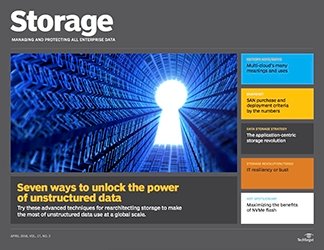PRO+ Premium Content/Storage
Access your Pro+ Content below.
Latest data storage technology takes application-centric approach

This article is part of the Storage issue of April 2018, Vol. 17, No. 2
I remember the days when storage was downright boring. Year after year, manufacturers released iterations of their products with new features here and there, but it all looked pretty much the same. Comparisons among vendors read like lists of common bullet points, and it was easy to decide based solely on these comparisons. Although storage vendors reacted to advances on the application side of the house, they decided what features they would add, when they would add them and how much extra they'd charge to support new capabilities. When it came to the latest data storage technologies, there were no surprises. This is no longer the case. Today's storage market is simultaneously massively consistent and wildly fragmented, with vendors tripping over themselves to add features they think will catch on. Many support a core set of capabilities while offering trend-chasing features they hope will make them stand out from the pack. And as these trends come and go, storage vendors work furiously to add support for transient services in ...
Features in this issue
-
Learn storage techniques for managing unstructured data use
Rearchitect storage to maximize unstructured data use at the global scale for larger data sets coming from big data analytics and other applications.
-
SAN purchase and deployment criteria by the numbers
Capacity and application needs drive businesses to deploy new storage area network systems, while criteria such as number of LUNs and multipathing are key to purchasing decisions.
Columns in this issue
-
A multi-cloud strategy provides more options and headaches
The days of the cloud as a single, homogenous entity are long gone. Going forward, you'll likely have a multi-cloud storage strategy and work with multiple service providers.
-
Want IT resiliency? Look to both security and disaster recovery
Security, protection from hackers and ransomware, disaster preparedness and disaster recovery are all means to the goal of resilient IT infrastructure and business processes.
